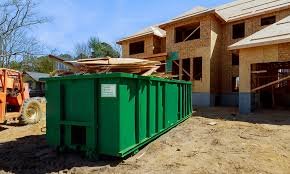Embarking on a construction project, whether a home renovation, commercial building, or landscaping overhaul, requires meticulous planning, especially regarding waste management. Selecting the appropriate size dumpster is paramount to ensure efficiency, cost-effectiveness, and regulation compliance. Here, we’ll delve into valuable tips to guide both consumers and businesses in choosing the optimal construction dumpster size for their projects.
Assess the Scope of Your Project
The first step in selecting the right dumpster size is thoroughly assessing your construction project’s scope. Consider factors such as the type of materials being disposed of, the duration of the project, and the estimated amount of waste generated daily. A comprehensive understanding of these aspects will provide a solid foundation for determining the appropriate size needed to efficiently accommodate your waste disposal requirements.
Understand Dumpster Size Options
Dumpsters come in various sizes, typically measured in cubic yards. Common options range from small 10-yard containers suitable for minor renovations to larger 40-yard dumpsters ideal for substantial construction projects. Familiarize yourself with the available sizes offered by dumpster rental services to determine which aligns best with your project’s needs.
Estimate the Volume of Debris
Accurately estimating the volume of debris your project will generate is crucial in selecting the right dumpster size. You can use online calculators provided by dumpster services or consult with waste management professionals to accurately assess your waste disposal needs. Overestimating or underestimating can lead to inefficiencies and unexpected costs, making it essential to gauge the volume as accurately as possible.
Consider Space Constraints
Evaluate the available space at your construction site to accommodate the dumpster. Measure the dimensions and consider potential obstructions such as overhead wires, trees, or uneven terrain. Choosing a dumpster size that fits comfortably within the designated area ensures smooth logistics and prevents disruptions to your project timeline.
Factor in Weight Limits
In addition to size, consider the weight limits associated with each dumpster size. Different materials have varying densities, affecting the weight of the debris. Exceeding weight limits can result in additional fees or even delays in waste removal. Be mindful of weight restrictions when selecting a dumpster size to avoid unforeseen expenses or complications.
Plan for Waste Segregation
If your construction project involves different types of waste, such as concrete, wood, or metal, plan for waste segregation accordingly. Opting for separate dumpsters or utilizing dividers within a larger container can streamline the sorting process and facilitate recycling efforts—factor in the need for multiple dumpsters or compartments when choosing your appropriate size.
Here are five tips to complement the paragraph on waste segregation:
- Categorize Waste Streams: Divide your waste into categories based on material type, such as concrete, wood, metal, and general debris. This classification will streamline the sorting process and enable efficient disposal or recycling.
- Utilize Color-Coding: Implement a color-coding system to designate different dumpsters or compartments for each waste stream. Clear visual cues help workers identify and segregate materials accurately, reducing contamination.
- Educate On-Site Personnel: Provide comprehensive training to on-site personnel regarding waste segregation protocols and the importance of proper disposal practices. Empowering workers with knowledge enhances compliance and promotes a culture of sustainability within your construction project.
- Partner with Recycling Facilities: Establish partnerships with local recycling facilities to ensure proper disposal of recyclable materials. To minimize landfill waste, verify which materials can be recycled and coordinate pickup or drop-off schedules.
- Regular Monitoring and Adjustment: Continuously monitor waste segregation practices throughout the project and make necessary adjustments. Regular inspections help identify any lapses or inefficiencies in waste management processes.
Consider Environmental Regulations
Be aware of local regulations and environmental guidelines governing waste disposal in your area. Certain materials may require special handling or recycling measures to comply with regulations and minimize environmental impact. Choose a dumpster size that allows for proper disposal and recycling practices following local laws and regulations.
Plan for Unexpected Surges
Construction projects are inherently dynamic, with the potential for unexpected surges in waste generation. Factor in contingencies for unforeseen circumstances, such as demolition debris volume exceeding initial estimates or unexpected delays in waste removal.
Selecting a slightly larger dumpster size than initially anticipated can provide flexibility and mitigate potential disruptions to your project timeline.
Seek Recommendations from Experts
Feel free to seek recommendations from waste management professionals or experienced contractors when choosing a dumpster size. They can offer valuable insights based on their expertise and familiarity with similar projects. Collaborating with experts ensures you make an informed decision tailored to your construction project’s requirements and challenges.
Compare Pricing and Services
Compare pricing and services offered by different dumpster rental services to ensure you get the best value for your investment. Consider factors such as rental fees, delivery, pickup charges, and any additional services such as recycling options or extended rental periods. A comprehensive evaluation of pricing and services will help you make a cost-effective choice.
Conclusion
Selecting the right construction dumpster size is a critical aspect of project planning that directly impacts efficiency, cost-effectiveness, and compliance. You can make an informed decision by following the above guide. With careful consideration and planning, you can optimize waste disposal and streamline your project’s progress, ultimately contributing to its success.

